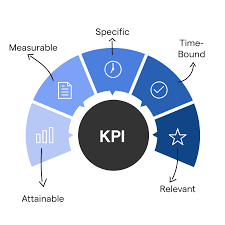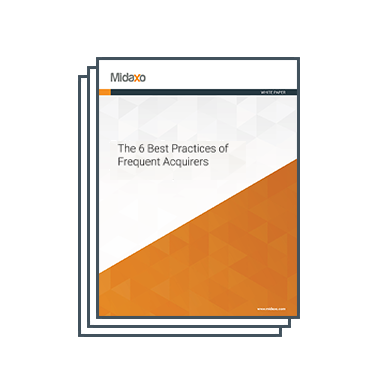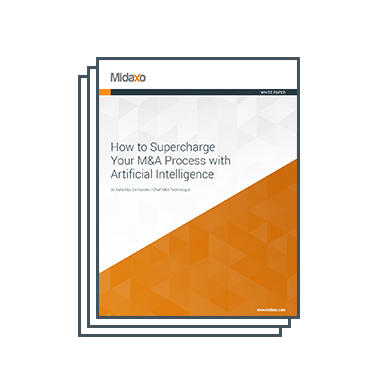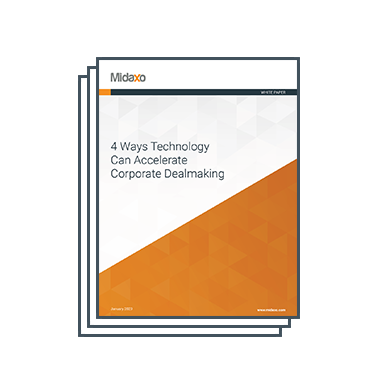The Need for KPI Management
Inorganic growth is a critical driver to business success. However, despite this importance—along with the relative high failure rates in executing on M&A— the M&A process has often lacked the same rigorous scrutiny and end-to-end optimization that is applied to other core functions such as sales and manufacturing. As private equity expands its presence, as our global interconnectivity increases, and as M&A related data sources and technologies evolve, the competitive landscape for the same deals is increasing. In response, M&A leaders, CFOs, and boards are all seeking a more predictive, repeatable, and optimized approach that ensures inorganic growth goals a met consistently and robustly.
For predictability, repeatability, and optimization, KPIs (Key Performance Indicators) are a key vehicle. KPIs are metrics that are linked to a business objective and have a target/goal. They provide a window into the M&A process performance; offer a cockpit view into your deal accuracy and performance; give you an early warning system to risks and issues; and create a framework for accountability across teams.
End-to-End M&A Performance Tracking Remains Elusive
The most ambitious of you want to use KPIs to track actual realized value for all deals against your M&A inorganic growth goals i.e., track end-to-end M&A process performance. This enables you to not only understand historic performance but also to predict future performance with greater confidence. Such confidence helps inform key decisions e.g., capital allocation, optimizing returns, and managing risks. Today, few can claim success in achieving this end-to-end M&A process performance tracking. Those that can have a common denominator: a modern system that supports and connects every stage of their process.
Barriers to end-to-end process tracking often include:
- Organization silos. Typically, the transaction and integration phases are managed by separate teams. The M&A team focuses on getting the deal closed, while the business unit is responsible for realizing synergies. Such handoffs create gaps in accountability and visibility.
- Data fragmentation. Despite the availability of modern end-to-end M&A platforms (e.g., Midaxo Cloud) that make process reporting easy, many M&A teams still rely heavily on spreadsheets and are supported by a sub-system specific to only part of the M&A process (e.g., VDR for diligence). This fragmentation makes reporting inefficient and leads to inconsistencies in KPIs as the process and data are adapted in the field with little central control.
- Long tail of value realization. While M&A goals may change as often as annually, the value of a deal identified in the deal-thesis may take many years to fully realize. Maintaining focus and visibility over such long timelines can be challenging, and organizations frequently lose patience and momentum in tracking these outcomes.
Due to these end-to-end process tracking barriers, there is a gravitational pull towards monitoring KPIs within the subprocesses only.
The following areas tend to gain the most traction and attain highest maturity:
- Target Quality. What is the quality of targets being identified in the pipeline versus the M&A strategy investment criteria?
- Deal Pipeline Tracking. Accumulated value of deals closed or planned-to-be closed versus the M&A goals. Maybe using probability and time to close as part of this calculation.
- Deal Lead Performance. Similar to ‘Deal Pipeline Tracking’, but with a focus on a deal lead and progress against his/her individual targets. This could include other KPIs such as time to close, conversion rates through each deal stage, and relationship management activity.
- Deal Score Priority. Through deal screening and diligence, a set of KPIs that can be accumulated into a summarizing a deal’s overall attractiveness versus the M&A strategy and company fit. These KPIs could be both financial (e.g., revenue) and non-financial (e.g., culture fit, customer retention, people retention).
- Deal Thesis. Set of KPIs, that trace back to the M&A strategy, that are given targets for the deal on which the evaluation is performed and final close is approved. This deal thesis is inherited by the integration team as the starting point to define the goals for the deal’s PMI phase and synergy tracking.
- Project Management. Whether in diligence or integration, the reliance of disciplined project management is required. The setting of a project includes clear measurable goals, defining the milestones and tasks, setting up the team, allocating responsibility of the tasks to the team members, creating an issue and risk log, and providing the tools for the teams to perform and collaborate on the project. All this screams for strong KPI management and visibility through the deal execution.
- Value Realization. Often called synergy tracking, this is where the rubber hits the road and the deal thesis KPIs needs to be broken down and allocated out to individual people responsible in the integration and post integration realization phases.
Midaxo Cloud offers all these areas of process and KPI management out-of-the-box with analytics, best practice playbooks and best practice reports. Further, Midaxo Cloud can help with linking synergy initiatives KPIs to tasks in the task tree, which allows easy identification of the people and actions that drive the value realization.
Steps to Mastering KPIs
Here are the steps you can take to master KPIs for your M&A process. Depending on where you are on your journey of deploying KPIs, you will want to jump to the step most relevant to you.
1. Start small and be realistic.
Which KPIs would have the biggest impact on your M&A team’s performance in the near-term? For example, most M&A teams can follow the examples of a sales team and set-up KPIs that provide both historic and predictive indicators to deal pipeline progress e.g., a deal funnel. While synergy tracking is perhaps the most mature KPI management in M&A, it is also the one with the longest tail and may not be the place you want to have the nearest-term improvement.
Brainstorm with your team and map out the most impactful KPIs the team would want to review regularly and put a roadmap together for their implementation. The best KPIs are clearly linked to business outcome, are simple but effective, have clear ownership, can be easily tracked, and pass the relevance test. Ask yourself: if this KPI were off track, would I pick up the phone to try to rectify it immediately?
2. Engage expertise and leverage best practices.
Look for people within your organization who have experience implementing KPIs and reporting—whether in M&A or another area of the business. Someone who has done this before can help to accelerate your journey by building momentum and confidence across the team. Also, seek best practices; indeed, there is tons of literature available, such as M&A playbooks, that come with a recommended set of KPIs and process.
3. Improve systems and technologies to enable your KPI journey.
Easy, efficient reporting is critical to keeping your KPI program sustainable. You will quickly lose steam if your KPIs require too much organizational effort to report on. Ultimately, aim to make your KPIs visible through real-time dashboards, always available for your teams and stakeholders to discuss and action.
Platforms like Midaxo Cloud can make this easier by enabling efficient execution of your M&A process, while automatically capturing data at every step. Real time reporting is available to you through the platforms’ analytics. Your team can be up and running with Midaxo Cloud within a week tailored to the key M&A processes important to you (e.g., pipeline/deal-screening) with a set of best practice KPIs and reports available instantly.
4. Make KPI review part of your team’s culture and reward system.
Integrate KPI reviews into your team’s regular operating model, meetings, and workflows. Fast track KPI management by clearly linking the KPIs to roles in the team. Expect the KPI monitoring and visibility to fall on these roles. Reward people that embrace this new responsibility. Regularly revisit these metrics in team reviews to reinforce alignment and drive focus. Embrace a culture of using KPIs in the decision-making process, making the effort to recognize success and those team members showing the greatest initiative.
5. Learn from your KPI tracking and seek continuous improvement.
Use your KPI insights to continuously refine both your processes and the KPIs themselves. Adjust them over time to ensure they’re providing the insights and guidance your team needs to drive better outcomes.
6. Champion the KPI journey.
Actively lead the effort to expand KPI depth and coverage across the M&A process. Continuously look for opportunities to improve the supporting systems and processes to enhance the effectiveness and value of your KPI program.





